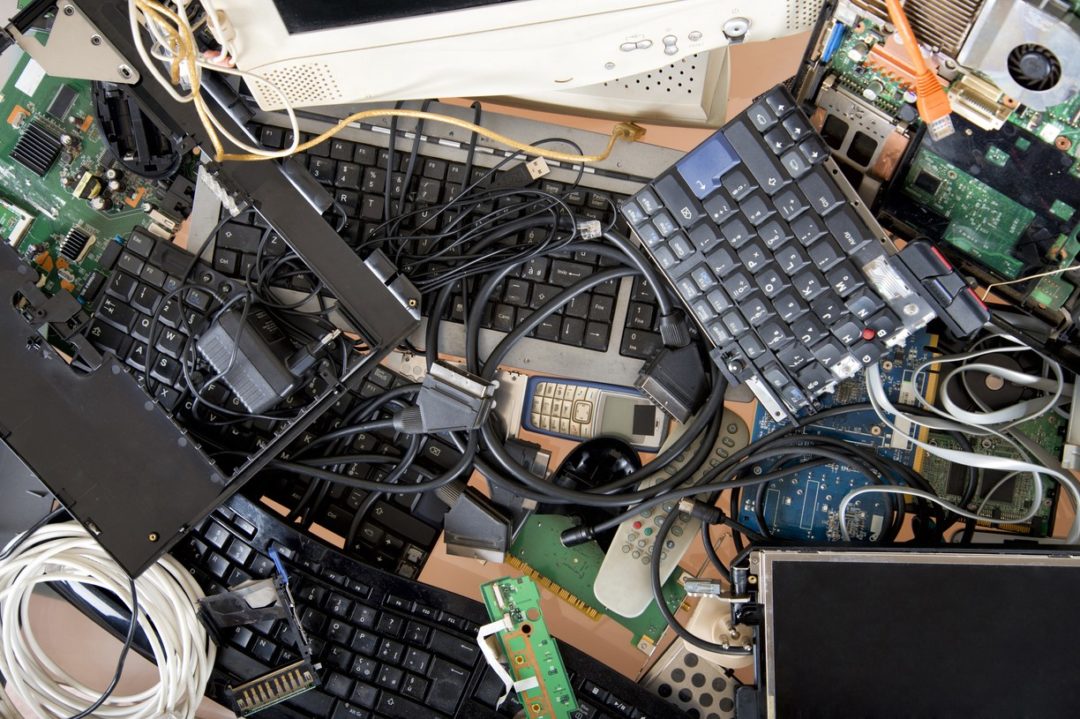
Home » Who’s Responsible for Keeping E-Waste Out of Landfills? Everyone Is
SCB FEATURE
Who’s Responsible for Keeping E-Waste Out of Landfills? Everyone Is

Photo: iStock.com/Lady-Photo
April 10, 2023
The world is getting buried in electronic waste.
Over the last eight years, an estimated 420.3 million metric tons of e-waste has been produced globally, and the number is expected to double by 2050.
The e-commerce boom is a major contributor to the problem, with many manufacturers and retailers failing to recycle or resell electronics that are returned by dissatisfied consumers.
The return rate for electronics purchased in big box stores is between 7% and 10%, but it’s roughly twice that for e-commerce, according to Chuck Johnston, chief strategy officer of reverse-logistics specialist goTRG. One reason is the inability of online shoppers to see and touch the products they’re buying, resulting in a greater number of unhappy customers. Another is the very culture of e-commerce, where returns of consumer electronics are an accepted part of the experience. (They’re even more common for items such as apparel, with online shoppers deliberately buying more sizes and colors than they intend to keep, then sending back unwanted items after trying them on at home.)
E-waste represents just 2% of what goes into the waste stream, but it accounts for 70% of the toxicity, Johnston notes. Yet consumers are only returning around 12% of the old or broken electronics products that they buy, meaning that the rest ends up in landfills.
Making matters worse in the U.S. is the lack of a federal regulatory mechanism for minimizing the disposal of e-waste. Europe is ahead in that regard, with its Waste from Electrical and Electronic Equipment (WEEE) recycling requirement, as well as the Basel Convention on the control and disposal of hazardous waste. As many as 30 states are attempting to implement some form of regulation governing e-waste, but their efforts aren’t being coordinated, and it’s “next to impossible” to enforce rules that would prevent consumers from simply tossing their old cell phones and laptops into the trash, Johnston says.
Some retailers, both online and with physical stores, offer “trade-up and trade-in” programs that give shoppers a credit when they purchase new electronics products. But the larger problem, Johnson says, is the “consumptive nature” of the consumer, encouraged by the constant release of next-generation equipment by major brands.
The average lifespan of consumer electronics today is between four and five years, with rapid obsolescence built into products. “We’ve designed quality out of it,” Johnston says. “Things don’t last — they want you to buy. Consumers want a lower price point, more convenience and the latest bells and whistles; manufacturers create, and retailers sell. It’s a vicious cycle.”
Short of radically transforming the consumer’s mindset — and the foundation of the economy — there are steps that manufacturers, brands and retailers can take to minimize the amount of old electronics entering the waste stream. Chief among them is refurbishment, which nearly every major producer does to some degree, with the help of outsourced providers that specialize in that task.
Much more needs to be done, however. Johnston sits on the board of Repair.org, an industry association formed to promote “the right to repair.” Current membership consists of more than 400 companies, advocating for “repair-friendly policies, regulations, statutes, and standards at the national, state and local levels.”
Working against that effort is the tendency of some major brands to protect their intellectual property by refusing to let independent repair services touch their equipment. Apple Inc. has been especially protective of its products over the years, Johnston says, although it began relaxing that stricture in late 2021 when it announced a self-service repair policy, under which users could buy parts to fix their own iPhones and Macs.
Some manufacturers continue to pursue regulations, or cite existing patent and copyright protection laws, to restrict access by third parties to their products. Countering such efforts under a “right to repair” banner can be tough. “We’re a small group with a small budget,” says Johnston of Repair.org. “They have a big budget with a lot of lobbyists. We’ve got to go state by state.”
Johnston isn’t optimistic that manufacturers will ever return to the practice of building products that last for years or even decades. The profit margins for many consumer electronics items are just too slim to allow for that. When a big-screen TV costs $400 to buy new, and $200 to repair when the screen cracks, the decision to replace the whole thing is pretty much a no-brainer.
Still, Johnston says, there’s plenty of opportunity to promote more recycling and refurbishment, and diverting a greater number of products from landfills. For one thing, the value of recovering certain components is high. “There’s more than $60 billion worth of precious metals in all this stuff we’re throwing in the landfill,” he says. Such materials could go a long way toward reducing the need for strip mining minerals that are still in the earth.
Johnston says goTRG is able to refurbish and place into the secondary market up to 95% of the 100 million units of phones, laptops, gaming systems and computers that it processes each year. Often they require relatively little work, with 70% to 80% of electronics industry returns subject to a verdict of “no fault found.” Such items can be cleaned up, data-wiped and reboxed for the secondary market — both in the U.S. and abroad — with relative ease.
The final piece of the puzzle — and perhaps the most important one — is the consumer. Johnston says buyers must make a greater commitment to returning old products.
“Seventy-five percent of consumers want to deal with a company that’s environmentally sustainable,” he says. “Customers put it on retailers, but oftentimes they don’t put it on themselves. In the U.S. today, there’s very little oversight of what the consumer does. That’s the largest source of waste.”
RELATED CONTENT
RELATED VIDEOS
Subscribe to our Daily Newsletter!
Timely, incisive articles delivered directly to your inbox.
Popular Stories

2023 Supply Chain Management Resource Guide: Packing for a Difficult Year
VIEW THE LATEST ISSUECase Studies
-
JLL Finds Perfect Warehouse Location, Leading to $15M Grant for Startup
-
Robots Speed Fulfillment to Help Apparel Company Scale for Growth
-
New Revenue for Cloud-Based TMS that Embeds Orderful’s Modern EDI Platform
-
Convenience Store Client Maximizes Profit and Improves Customer Service
-
A Digitally Native Footwear Brand Finds Rapid Fulfillment



